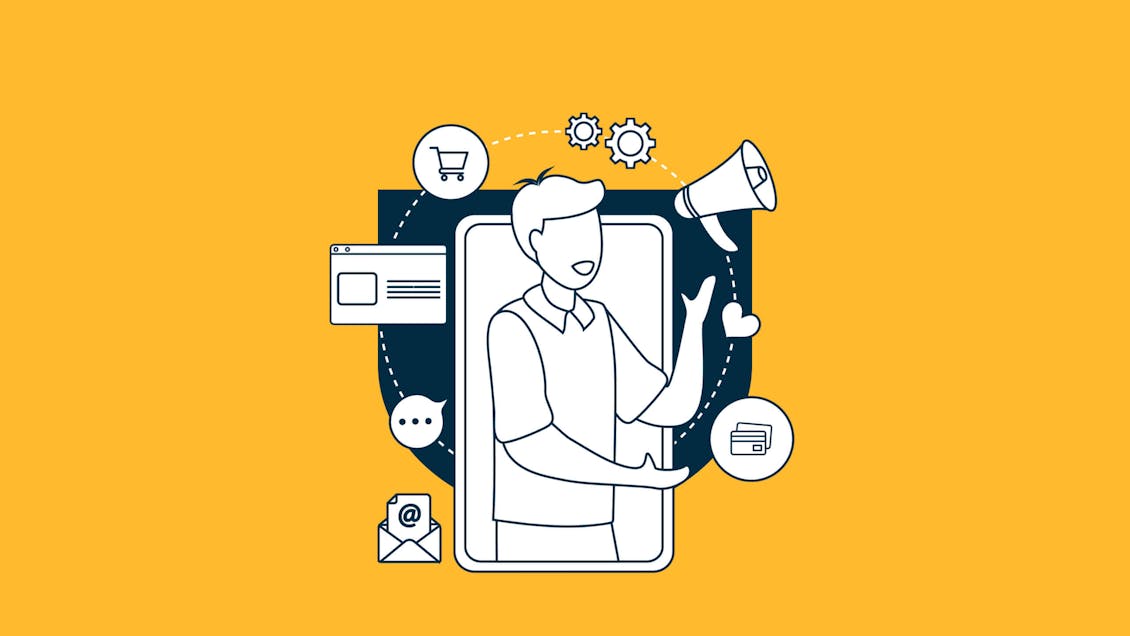5 best practices in omnichannel experiences

AI, automation, and data analytics are driving a new era of CX
Omnichannel isn’t just a trendy term or a lofty goal. The most successful companies integrate data insights, customer feedback, forecasts, and proactive planning to see the bigger picture and unlock trapped value. And by implementing omnichannel transformation today, they are even better positioned for the next wave: AI-powered customer experience.
As digital expectations rise, leading firms are moving beyond basic support to anticipate customer needs and deliver seamless, personalized experiences at every touchpoint. The goal isn’t just satisfaction; it’s to create interactions that feel effortless, memorable, and loyalty-building. Especially with the changing landscape around AI-powered search, understanding the value of omnichannel experience design — and building a cohesive strategy around it — has become mission-critical.
Previously, we’ve highlighted some examples of leaders in omnichannel customer experience, like Starbucks, Disney, and Sephora, as brands that continue to innovate and lead the pack.
How can your business be more like the leading omnichannel CX brands driving growth, loyalty, and retention today? Modus is here to help you understand some of the best practices driving omnichannel customer experience strategy, plus we’ve added real-world examples and metrics to measure success.
Centralize data at scale
A unified customer view consolidates data from various touchpoints — such as websites, emails, social media, in-store interactions, and customer support — into a single, comprehensive profile. This holistic perspective enables businesses to understand customer behaviors and preferences, facilitating more personalized and consistent experiences across all channels.
Organizations should identify all the systems and databases that store customer data and determine which ones need to be integrated into the unified customer view. Ensure good-quality data is being used to guide accurate decision-making.
Real-world example: Modus helped Novartis, a global life sciences firm, overcome operational silos to transition from legacy IT systems to implement a customized Salesforce interface and reporting dashboard. With a unified view of its patient support program, Novartis can now ensure that all departments have access to up-to-date customer information, promoting coordinated efforts in marketing, sales, and patient support services. The results so far have been remarkable — a 22.5% increase in patient conversion rates and 95% better call quality scores.

A patient-first vision for pharma
Download NowMap the customer journey across touchpoints
Customer journey mapping involves visually representing the various stages and interactions a customer has with a brand. By identifying each touchpoint — whether online or offline — and associated emotions, businesses can pinpoint pain points and areas for improvement.
Effective journey mapping not only highlights obstacles but also uncovers opportunities to enhance the customer experience, ultimately leading to increased satisfaction and loyalty.
Real-world example: Hilton recently went beyond its traditional post-stay customer surveys by gathering more real-time insights through continuous listening with Qualtrics. With the help of AI-powered analysis of feedback from channels such as their call center and social media, they discovered a key point of customer friction detracting from guests’ experience: towel quantity and quality. By revamping their towel program with 40 million new, cost-effective yet plush towels, they reported an increase in guest satisfaction.
AI-driven customer journey orchestration
Customer journey orchestration (CJO) leverages AI and machine learning to optimize individual interactions across channels in real time. This dynamic approach enables businesses to analyze behavioral signals, predict customer needs, and deliver personalized experiences that enhance engagement and conversion rates. Unlike static segmentation, CJO adapts to each customer's unique journey, fostering deeper connections and loyalty.
Real-world example: Discount retailer Overstock has always relied on email to drive customer marketing, but with the Braze platform, they now send fewer, more targeted messages based on customer behaviors. For example, by deploying cross-channel orchestration, customers with items left in their carts could receive push notifications to entice them to purchase.
AI-powered personalization
Today’s customers want experiences tailored to their needs, no matter where they are or what language they speak. Research from McKinsey found that 71% of consumers expected companies to deliver personalized interactions, and 76% got frustrated when it didn’t happen.
Personalization in an omnichannel context involves delivering tailored content and experiences based on individual customer data and behaviors. By leveraging real-time data, businesses can provide relevant recommendations and communications across all channels, increasing engagement and conversion rates.
Real-world example: For instance, health and wellness brand Ritual has utilized Twilio Segment Engage to combine warehouse, event, and customer profile data to deliver personalized, real-time marketing strategies. For its prenatal vitamin, Ritual sends pregnancy-related editorial emails followed by a post-natal journey to promote its other vitamins. With AI-powered predictive analytics based on shopping habits, Ritual can offer relevant, personalized product suggestions to boost retention and loyalty.
Track, measure, and optimize performance across channels
Not everyone gets omnichannel right the first time — and that’s okay. Measuring performance is what helps marketing and CX teams figure out what’s working, what’s not, and how to make improvements that actually matter. Without clear metrics, it’s hard to know where customers are dropping off or how to create a more seamless journey. By tracking the right data across channels — from digital interactions to in-store behavior — teams can uncover insights that lead to better personalization, stronger engagement, and lasting customer loyalty.
Below are key performance metrics you can track, organized by category:
Customer Engagement Metrics
These help you assess how well customers are interacting across channels.
- Customer Retention Rate (CRR): Measures how many customers keep coming back across channels.
- Customer Lifetime Value (CLV): The total value a customer brings across their journey.
- Cross-Channel Engagement Rate: Tracks interactions across platforms (e.g., mobile app, website, in-store).
- Click-Through Rate (CTR): Especially useful for email/SMS campaigns leading to digital actions.
- App Engagement/Usage: Frequency and duration of app use compared to web or in-person channels.
Sales & Conversion Metrics
Evaluate how omnichannel strategies drive revenue.
- Conversion Rate by Channel: Measures which channels or combinations lead to conversions.
- Average Order Value (AOV): Can show how cross-channel personalization influences purchase size.
- Cart Abandonment Rate (and Recovery): Especially when tracking behaviors across devices.
- Attribution Models: Multi-touch attribution can help credit the right channels for conversions.
Customer Satisfaction & Loyalty Metrics
These help you understand how well you're meeting customer expectations.
- Net Promoter Score (NPS): Measures customer loyalty and likelihood to recommend.
- Customer Satisfaction Score (CSAT): Post-interaction feedback across channels.
- Customer Effort Score (CES): How easy it is for customers to resolve an issue or complete a task.
- Churn Rate: High churn can signal poor cross-channel consistency or friction.
Operational Efficiency Metrics
Assess how your team and systems are delivering on experience goals.
- Time to Resolution (TTR): Speed of issue resolution across channels (especially support).
- First Contact Resolution (FCR): Whether an issue was resolved in the first touchpoint.
- Channel Containment Rate: How many issues are resolved within a single channel (without escalation or switching).
- Inventory Turnover / Fulfillment Speed: In retail or DTC, this shows how well backend systems support cross-channel delivery.
Channel Performance & Consistency
Measure consistency and performance across platforms.
- Channel Preference Trends: Are customers shifting toward chat, SMS, or app usage?
- Experience Consistency Score (qualitative or survey-based): Do customers perceive the same brand value across all touchpoints?
- Drop-off Points in Journeys: Identify where users abandon the process when switching channels.
Your next steps
Getting omnichannel CX right isn’t easy, but when your brand connects with customers seamlessly, it can feel like magic. Keeping best practices in mind, such as integrating your data (CRM, analytics, POS, etc.) to create a unified view of the customer and using customer journey mapping to identify the most critical touchpoints will get you off to a good start. Once you are leveraging advanced technology such as AI-enabled customer journey orchestration and tracking KPIs to optimize strategies, you’ll be on your way to driving better engagement and loyalty. Want help connecting the dots with your omnichannel CX program? Reach out to Modus and get started today.



